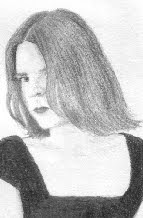2007 TBR Challenge #9
 In the beginning there was Eru. And from Eru, directly or indirectly, came all the things of Middle-Earth and everything beyond it. Among them was the Silmarils, three fine jewels that carried the light of the Two Trees of Valinor. Although they are things of beauty, they bring about disaster, as the desire for their possession causes rebellion and bloodshed and war, as well as deeds of great cunning and heroism. And watching over all the War of the Jewels is Morgoth, the original Dark Lord, sowing the seeds of dissension and waiting for the moment to strike. Much of the tale of the early days of Middle-Earth is covered by the Quenta Silmarillion, but this is bracketed by four shorter legends. Ainulindalë tells of the creation of the world and of the powers that shaped it and watched over it. Valaquenta describes those powers, greater and lesser, good and evil. Akallabêth is Middle-Earth’s version of the Atlantis myth: the drowning of Númenór. And Of the Third Age and the Rings of Power brings Middle-Earth magical history to a close with the destruction of Sauron and the beginning of the dominion of Men.
In the beginning there was Eru. And from Eru, directly or indirectly, came all the things of Middle-Earth and everything beyond it. Among them was the Silmarils, three fine jewels that carried the light of the Two Trees of Valinor. Although they are things of beauty, they bring about disaster, as the desire for their possession causes rebellion and bloodshed and war, as well as deeds of great cunning and heroism. And watching over all the War of the Jewels is Morgoth, the original Dark Lord, sowing the seeds of dissension and waiting for the moment to strike. Much of the tale of the early days of Middle-Earth is covered by the Quenta Silmarillion, but this is bracketed by four shorter legends. Ainulindalë tells of the creation of the world and of the powers that shaped it and watched over it. Valaquenta describes those powers, greater and lesser, good and evil. Akallabêth is Middle-Earth’s version of the Atlantis myth: the drowning of Númenór. And Of the Third Age and the Rings of Power brings Middle-Earth magical history to a close with the destruction of Sauron and the beginning of the dominion of Men.
I can scarcely begin to imagine the amount of notes and organisational ability needed, not only to create such a complex mythology, but to avoid getting it hopelessly muddled. The legends in the book span thousands of years of Middle-Earth history - not to mention geography and genealogy, in several different languages. What I most marvelled at here, just like with The Lord of the Rings, was the sheer scale and thoroughness of Tolkien’s creation. Everything is coherently explained; there’s no point where you wonder how or why something happened. And it all really does read like a collection of ancient myths (or what I imagine ancient myths would be like, since I don’t recall having read any genuine ones). I love the style of writing: ’But in after years he rose like a shadow of Morgoth and a ghost of his malice, and walked behind him on the same ruinous path into the void.’ Even if you weren’t acquainted with Sauron from The Lord of the Rings, he’d still sound evil. The legends even contain several passing references to vampires - a beastie I didn’t know Middle-Earth had.
There’s quite a bit of background to The Lord of the Rings here, and not just in the final chapter. It also covers the arrival of the Dwarves and their poor relationship with the Elves; the previous ill deeds of Sauron and his disembodiment; and Galadriel’s rebellious past. And some of the legends referred to in the trilogy appear at full length. Some, but not all, meaning that this book had the same effect on me as The Lord of the Rings - I want to know more!
Rating: A-

















Hello! Fabulous review! I am reading this book in the long term at the moment and currently in it's early stages.
ReplyDeleteIt was never a case of 'if I could read it', I am similarly driven by the same need to know more so it's always been 'when' but it's taken a while. The book requires considerative reading in places I think. (Damn, I think I just made that word up...but it so seems to suit! Can you live with it?)
Anyway, your review has inspired me to hasten to the book and complete it! Thank you!
Have you seen the book 'The Tolkiens Companion'?
I knew I should have spent a little more time surfing my favorite blogs this morning! I might have picked this book up while I was out. Great review!
ReplyDeleteDancin' Fool: I think "considerative reading" is just the phrase to describe it! found that the style of writing encouraged a slower pace. And I haven't seen the Tolkien Companion - one more for the Wanted list!
ReplyDeleteLiterary Feline: Isn't it awful when book-related opportunities slip by like that?